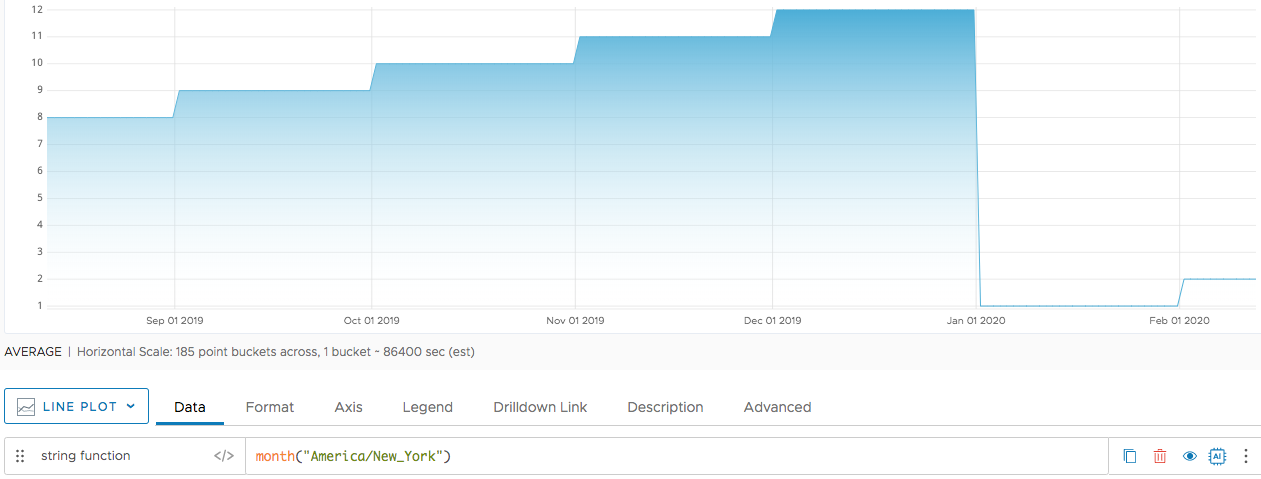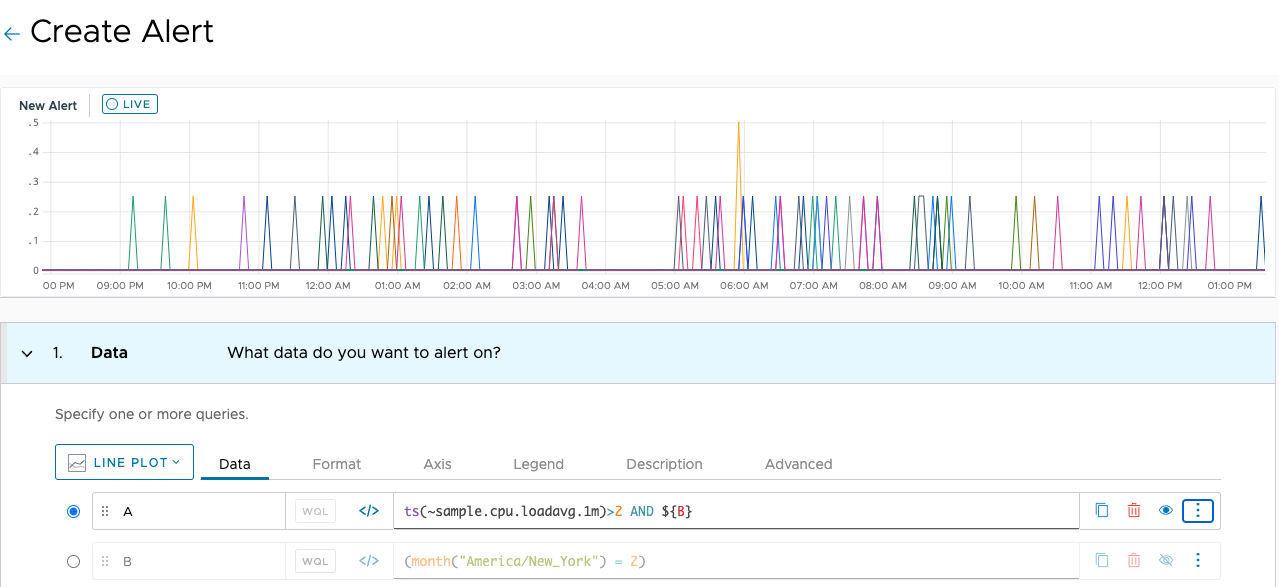Summary
month(<timeZone> [,<tsExpression])
Returns the month of the year in the specified time zone.
Parameters
| Parameter | Description |
|---|---|
| timeZone |
String identifier or alias for a time zone, such as "US/Pacific". Names are case sensitive and must be enclosed in quotes. For a list of valid time zone identifiers and their aliases, see http://joda-time.sourceforge.net/timezones.html.
|
| tsExpression | Optional expression to which you want to apply this function. |
Description
The month() standard time function returns the month of the year in the specified time zone. A month is represented as a whole number from 1 (January) through 12 (December), as defined by the Gregorian calendar.
The returned values are plotted against the times shown on the x-axis. The returned series is generally a straight line, unless you are looking at a chart that includes times from multiple months.
month() automatically adjusts its return values for daylight savings time.
month() is particularly useful when you want to define an alert that fires only during a specific month or range of months, such as quarters of the year (Q1, etc.). For example, you could use an expression such as between(month("America/New_York"),4,6) in an alert condition to ensure that the alert fires only in Q2 (April through June), Eastern Daylight Time.
Examples
Example 1: Showing Months
In this chart, we have set a custom date that goes from August 12 to February 12. month("America/New_York") returns 8 (August), 9 (September)… and then 1 (January) and 2 (February.

Example 2: Defining an Alert that Fires in a Particular Month
Here we include (month("America/New_York"),2) to define an alert that fires when the CPU load average rises above 2.0 in February.
